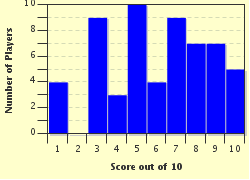Quiz Answer Key and Fun Facts
1. The idea for copyleft was to be the opposite of copyright. Though a recognized concept from long before, copyright law came into being after printing presses were invented, and a printer required a license to print a specific work. Today, copyright is a legal protection of a creator's rights to their work. Which of these is NOT protected by copyright?
2. One programmer/activist, still recognized by many as "rms", agreed to give some of his code to another group of programmers. However, when he asked for their improved code in return, they refused. Can you identify "rms"?
3. So, the idea for copyleft came from the computer software community. The idea was that programming code shouldn't belong to only one person/company, but be available to all to incorporate, modify and share. What is another word for software code that is owned by one company that licenses the right of use?
4. The first copyleft license was made available by GNU (GNU's Not UNIX). This is often called GNU GPL or just GPL. What does GPL stand for?
5. Copyleft licenses can be categorized as either strong or weak. A weak license allows that not all products created from the original will inherit the original license. Which of these licenses is considered to be a weak copyleft license?
6. The GNU GPL refers to free software, and because "free" has more than one meaning this has been the cause of some confusion. As used in the GPL, does it mean that there is no cost for the source code or the software program?
7. Which operating system, originally developed by Linus Torvalds, was licensed under the copyleft GNU GPL?
8. If a programmer wants his software to be available to all for distribution and modification, copyleft is not the only available option. Which of these options also allows for free use and modifications?
9. Some opponents of copyleft licenses refer to them as viral because each of the end products must inherit the same licensing. Which of these pejorative terms was used to promote the viral argument?
10. Other copyleft licenses have been developed for art, music, and videos. Which of these non-profit organizations provides licenses free of charge?
Source: Author
mlcmlc
This quiz was reviewed by FunTrivia editor
CellarDoor before going online.
Any errors found in FunTrivia content are routinely corrected through our feedback system.

